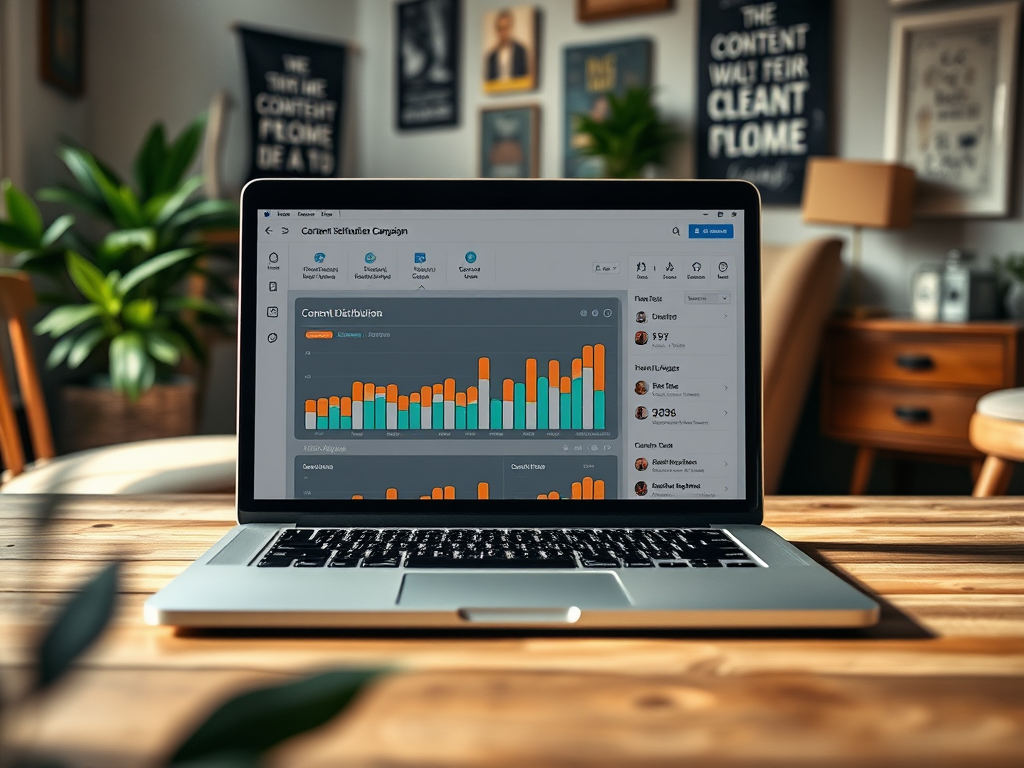In today’s digital landscape, merely creating outstanding content is not enough. The actual effectiveness of your messaging lies in how well it’s distributed to your target audience. A well-structured content distribution strategy ensures that your content finds its way to the right eyes, fostering engagement, brand awareness, and conversions. Understanding the nuances of distribution can be the difference between a viral success and a missed opportunity. Furthermore, with an expansive array of platforms and channels available, knowing where to allocate your resources is crucial. This article delves into crafting an efficient content distribution strategy, helping you maximize your content’s reach.
Understanding Content Distribution

Content distribution is the methodical sharing and promotion of content across various channels. It serves as the bridge that connects your content with potential audiences, driving not just traffic but also meaningful interactions. The scope of content distribution extends beyond mere publishing; it’s about strategic placement and timing. By leveraging multiple channels, brands can amplify their messaging and increase visibility. A successful content distribution strategy is planned with a company’s goals and audience needs in mind. That’s how you can engage effectively and maintain relevance in a crowded marketplace.
To fully harness the power of content distribution, it’s important to understand the different types of media available. Each type serves a unique role in the overall strategy:
- Owned Media: Websites, blogs, and social media accounts controlled by your brand.
- Earned Media: Publicity gained organically, such as shares, mentions, and reviews.
- Paid Media: Sponsored content, pay-per-click advertising, and promoted posts.
Crafting Your Content Distribution Strategy

Creating an efficient content distribution strategy requires a deep understanding of your audience’s preferences and behaviors. Knowing whom you’re speaking to is half the battle won. This involves not just generic demographics but a more nuanced comprehension of their interests and consumption habits.
Determining Your Target Audience
Successfully reaching and engaging your audience starts with identifying who they are. Take some time to analyze the following aspects:
- Demographics: Age, location, income level, and gender can significantly influence content preferences.
- Interests: What topics do they engage with most? Understanding this can guide content creation and distribution.
- Behaviors: How do they prefer accessing content? Knowing their favored platforms allows for more effective distribution.
Choosing Distribution Channels
Examining multi-channel distribution strategies can substantially enhance your reach. Selecting the right channels involves a careful analysis of where your audience spends most of their time. Additionally, each channel comes with its unique user behavior and preferences.
| Channel Type | Advantages | Best Use Cases |
|---|---|---|
| Social Media Platforms | Widespread reach; immediate engagement | Brand awareness, customer feedback |
| Email Marketing | Personalized communication; high ROI | Promotions, newsletters |
| Content Syndication | Extended reach; audience growth | Guest blogs, partnerships |
Measuring the Success of Your Distribution Strategy
To ensure your content distribution strategy evolves and adapts, tracking its effectiveness is essential. Measurement not only validates your current approach but also illuminates areas for improvement. By monitoring various metrics, one can gain insight into audience behavior and content performance. Regularly evaluating the success can inform future strategies, helping you make data-driven decisions for better outcomes.
Focusing on specific KPIs will guide your understanding of how well your distribution efforts are performing. Consider keeping an eye on the following indicators:
- Engagement Rates: Metrics such as likes, shares, and comments indicate how well your content resonates.
- Traffic Sources: Analyze where visitors are coming from to determine the most effective channels.
- Conversion Rates: Measure how many users are taking the desired actions after interacting with your content.
Conclusion
A robust content distribution strategy is paramount for ensuring that your creations reach a broad audience. By harnessing the power of various channels and actively monitoring performance, you can enhance your overall approach for improved results. Keep in mind that the digital landscape is ever-evolving, so staying adaptable is crucial. Consistent evaluation and refinement can drive higher engagement, and ultimately, a more meaningful connection between your brand and its audience.
Frequently Asked Questions
- What is a content distribution strategy? A content distribution strategy is a plan that outlines how content will be shared and promoted across various channels to maximize reach and engagement.
- Why is content distribution important? Effective content distribution amplifies visibility, driving traffic and enhancing audience engagement.
- What are owned, earned, and paid media? Owned media includes channels controlled by the brand; earned media refers to publicity gained organically, and paid media involves paid advertising efforts.
- How can I measure the success of my content distribution? You can measure success using KPIs such as engagement rates, traffic sources, and conversion rates.
- Which social media platforms are best for content distribution? The choice of platforms depends on your target audience; popular options include Facebook, Twitter, LinkedIn, Instagram, and TikTok.